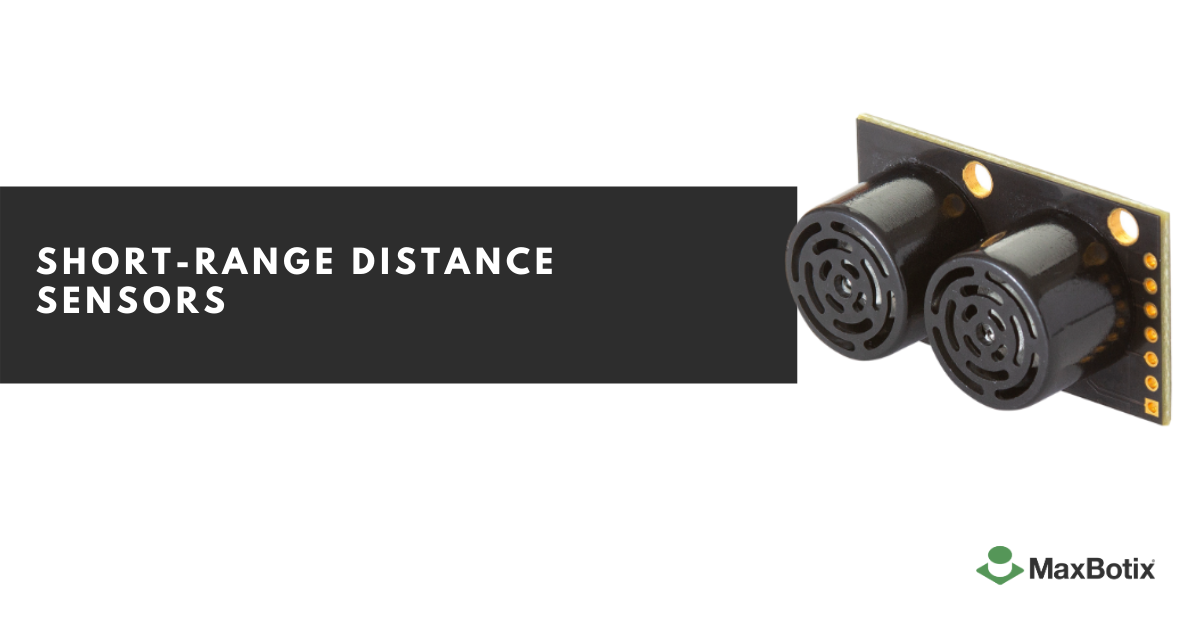 Our Close Range Sensors for Protected Environments. Featured Sensors: HRLV-ShortRange-EZ Line
Our Close Range Sensors for Protected Environments. Featured Sensors: HRLV-ShortRange-EZ Line
| RS232 | TTL |
| MB1603 | MB1604 |
| MB1613 | MB1614 |
| MB1623 | MB1624 |
| MB1633 | MB1634 |
| MB1643 | MB1644 |
For solutions where the following is needed:
- Precision range finding
- Low-voltage operation (low power consumption)
- Low cost
The benefits of using a short range ultrasonic sensor in your Short-Range Application
- It can sense nearly all kinds of materials.
- It can withstand many adverse conditions.
- It has longer sensing distances compared to inductive/capacitive sensors (in centimeters and inches).
- It provides the most accurate readings when the target is a hard and/or flat surface.
What are the ShortRange-EZ Sensors used for?
The ideal use cases for the ShortRange-EZ line of sensors are people detection and autonomous navigation.The wide beam patterns provided by this sensor line makes it ideal for these use cases.For people detection, this would likely be an occupancy detection application. We've worked with application developers and consultants that use ultrasonic sensors in kiosks to determine the presence or absence of people.Kiosks are one common application requiring people detection. In malls, interactive kiosks need to light up and interact with customers only when they are present. A short range distance sensor can be used to trigger a kiosk to light up and play music when customers are nearby. Likewise, ultrasonic sensors can recognize when a customer leaves.
Short Range Sensors used in Consumer Electronics
These days, homeowners want their homes to be automated. Controlling lights are one of the most popular, but other conveniences are video doorbells, and security alarms. All of these could benefit from proximity detection. This will allow lights to be turned on and off automatically and to give security alerts to cloud solutions. Many robotic vacuums use ultrasonic sensors for autonomous navigation and obstacle avoidance. The devices utilize multiple transducers that give them a 360-degree view of the room, allowing them to easily navigate even the most complex rooms. Due to its independence from light reflection and wider beam, ultrasonic sensing is more reliable than optical time-of-flight when it comes to avoiding obstacles.Industrial use of Short-Range Ultrasonic Sensors
The use of robots in the manufacturing industry is an emerging trend. Robots move materials around on the factory floor. In assembly operations, they pick up and place objects as needed. The collisions between robots and humans are a major concern. Ultrasonic sensors are well-suited to handle this task since proximity sensors assist in preventing these types of accidents. They add an additional level of intelligence to robots so they can complete their tasks without incident.Managing your Sensor Accuracy
Soft materials affect the sensor’s accuracy. Things covered in a very soft fabric absorb more sound waves, making it hard for the sensor to see the target. We suggest using this sensor in an application where the target is not made of a material that absorbs sound like hard or solid surfaces. The accuracy of the sensor is affected by temperature changes of 5-10 degrees or more. The ShortRange-EZ sensor line has temperature compensation built into the sensor components. This internal temperature sensor allows the sensor to apply a compensation for speed of sound changes. We also offer the HR-MaxTemp for external temperature use. This will help you get the best accuracy in your application. Basically, when the sensor is powered-up the HRVL-ShortRange-EZ will automatically detect an attached HR-MaxTemp and begin to apply temperature compensation using the external temperature sensor. The external temperature sensor allows for the most accurate temperature compensation by eliminating the sensor’s self-heating from the sensor electronics. This will allow you to place the temperature sensor closer to the center of the acoustic ranging path. The temperature sensor should be connected midway between the HRLV-ShortRange-EZ and the intended target. Frequently Asked QuestionsWhen should I use an ultrasonic sensor versus an optical sensor?
Ultrasonic sensors are useful for detecting clear objects, liquid levels, or reflective targets. Ultrasonic sensors also perform well in wet environments where an optical beam might be refracted by water. Ultrasonic sensors, however, are susceptible to temperature changes or wind.What type of targets should I avoid when using an ultrasonic sensor?
The best targets for ultrasonic sensors are large, flat, solid surfaces that are typically made of metal, ceramic, glass, or wood.The sensor's position should always be perpendicular. Pellets, sawdust or foam, which have soft or irregular surfaces, should be avoided.Not Sure Which Sensor You Need For Your Application?
Click the button below to get started in the sensor selection process.


